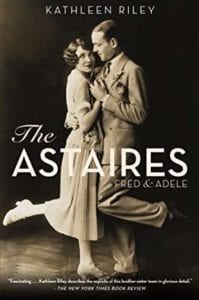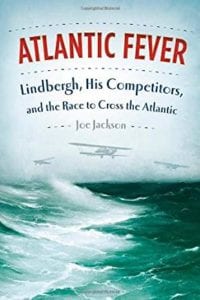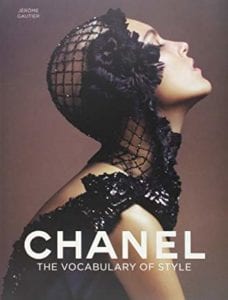
The Astaires: Fred & Adele
By Kathleen Riley
Oxford University Press
www.oup.com
The shows written for the Astaires’ singular talents changed the very shape of the American musical. Their first major collaboration with George and Ira Gershwin, Lady, Be Good! in 1924, was, according to Gershwin biographer Howard Pollack, “one of the quintessential American theatrical works of the 1920s” and “the work that finally severed musical comedy from operetta.” In the previous year, the Astaires had become ambassadors of the American musical, transforming the London musical stage and firmly establishing the international supremacy of the indigenous Broadway musical. Their final collaboration, The Band Wagon in 1931, began, in Brooks Atkinson’s words, “a new era in the artistry of the American revue,” through the imagination of its dance narratives, the pungency of its satirical sketches, and the technological audacity of its scenic transitions. Along the way the Astaires played a significant role in fashioning the rhythm and soul of the Jazz Age on both sides of the Atlantic.
– from The Astaires: Fred & Adele by Kathleen Riley, Oxford University Press 2012, www.oup.com. Reprinted with permission. All rights reserved.
Shelf Unbound: You write that “the Astaires played a significant role in fashioning the rhythm and soul of the Jazz Age.” How so?
Kathleen Riley: I think that, particularly in collaboration with George and Ira Gershwin, the Astaires helped to shape the cultural life of Britain and the United States between the wars. This alliance seems, in fact, the very measure of a specific moment and movement in history, of what playwright S. N. Behrman heard in Gershwin’s piano-playing, “the rush of the great heady surf of vitality,” of a decade whose modernity is, to us now, at once remote and startlingly fresh.
Fred and Adele, who were born in the late 1800s, literally grew up with the new century. They set or, at any rate, popularized trends in dance (like the Charleston) and in fashion. As personalities and performers they seemed quintessentially modern, metropolitan and American, New World. Apart from the fluency, speed, intricacy and wit of their dance style, they were masters of rhythm, rhythms that were slick, urban, nervous, jazzy. But, as in Gershwin’s music, alongside the surface polyrhythms were a real romanticism, a tenderness and yearning that were just as identifiably American. So in the truest sense they embodied the rhythm and soul of the Jazz Age, its sound, its energy, its pulsating heart.
Shelf Unbound: You point out that George Gershwin debuted “Rhapsody in Blue” in 1924 and that it was such an “intrinsic part of the American modernist vernacular” that it “found its way into
The Great Gatsby, published in 1925, where it was thinly disguised
as “’Vladimir Tostoff’s Jazz History of the World.’” Was a hallmark of the era an instantaneous embrace of the new, as evidenced by Fitzgerald’s swift appropriation of the piece?
Riley: An interesting question. The Great War changed the world and the cultural landscape utterly, and the 1920s witnessed such rapid progress and experimentation in nearly every field of human endeavor, a fact reflected with dizzying intensity in the visual arts particularly. But, in “high” culture at least, there is an essential paradox in this instantaneous embrace of the new, and it’s brilliantly encapsulated in the last lines of The Great Gatsby: “Gatsby believed in the green light, the orgastic future that year by year recedes before us. It eluded us then, but that’s no matter—tomorrow we will run faster, stretch out our arms farther…. And one fine morning—So we beat on, boats against the current, borne back ceaselessly into the past.” Here we have infinite possibility coupled with inevitability and pre-determination, aspiration with hopelessness. As much as the modernists sought to break violently with the immediate past, they frequently did this by delving back into the remote past (ancient Greece for instance) for inspiration and validation.
What is fascinating about the Astaires is their extraordinary popularity and impact at a time when Eliot’s Waste Land and Joyce’s Ulysses, Vorticism and Dada were exploding onto the world; their New World defiance of the darker aspects of the interwar psyche; their hopefulness and joie de vivre; their absolute modernity free of modernist angst.
Shelf Unbound: How did Fred Astaire’s dancing change in his post-Adele career?
Riley: For the most part, Fred and Adele’s dances were eccentric and comedic in style. Their off-stage relationship as brother and sister precluded dances of a more intimate nature. With “The Beggar Waltz” in The Band Wagon and “Night and Day” in Gay Divorce—partnered by Tilly Losch and Claire Luce respectively – Fred began to develop a new style that was highly dramatic, highly expressive and highly romantic.
After Adele, his style and choreographic repertoire necessarily expanded and diversified. With the exceptions of Ginger Rogers in the 1930s and Barrie Chase in the ‘50s and ‘60s, he never again had a long-standing professional partnership with one person. He was able to adapt his own style to the strengths, and more often the limitations, of each individual partner with whom he danced. He had a genius for making his partners (including a hat rack) look good and perfectly “in synch” as it were.
Fred had done a handful of significant solo numbers on stage, but it was really in his post-Adele career that he evolved as a truly protean and innovative soloist, who continually experimented with rhythms and props and cinematic special effects. He was, and remains, the person who best understood how to capture dance on film.

Atlantic Fever
By Joe Jackson
Farrar, Straus and Giroux
www.fsgbooks.com
As early as 1919, a standing prize of $25,000 had been offered to the first aviator to cross the Atlantic, in either direction, from America to France or France to America. Sponsored by expatriate French hotel-ier Raymond Orteig, his “Orteig Prize” was one of the most coveted prizes in the flying world. Yet it lay unclaimed for eight long years. Then, during five incredibly tense weeks in the spring of 1927, a window in history opened when seemingly unconnected strands of technology, finance, fanfare, and character met and merged. This convergence of place, time, and people created what The New York Times christened “the most spectacular race ever held.”
– from Atlantic Fever by Joe Jackson, Farrar, Straus and Giroux 2012, www.fsgbooks.com. Reprinted with permission All rights reserved.
Shelf Unbound: Atlantic Fever is as much about the men and women who chased the dream of flying across the Atlantic and failed as it is about Lindbergh, the first man who succeeded. What characteristics of the 1920s created these extreme risk takers?
Joe Jackson: I think the answer to that is a two-parter, based on the type of aviator. I think that the pilots who were the original entrants in the race—the Lindberghs, Byrds, etc.—were at heart daredevils and adventurers. These exist in every era: They form a kind of personality-type that stands outside any particular generation. Yet by 1927, a mix of technology, money, politics and design had brought aviation to the point where it was the “new frontier,” much as the space race would do with the Mercury astronauts in the 1960s. World War I had given aviation technology a kind of jumpstart, and many of the pilots competing for the Orteig Prize had trained as pilots during or immediately after the war. By the 1920s, they saw their chance to “push the envelope” with long-distance flying.
But for the second set of aviators, the ones who tried to duplicate their heroes’ efforts immediately after the end of the Orteig race, I think they were very much children of the media. The Jazz Age publicity machine, newly fueled by radio and newsreels, was like nothing Americans had ever seen. It was constant, it was in-your-face, and it was filled with tales of heroes and glory. I think the second set of flyers, many of whom were women, felt somewhere deep within themselves that this was a chance to reinvent themselves, to find a kind of freedom they had never dreamed possible, and in the process become heroes, too.
Shelf: You write at the end of the book that the sad fact remained that during the flying seasons of 1926/1927, at least thirty-one aviators vanished or died in the grip of a strange obsession that no one understood but that excited the world.” How does it strike you overall from a 21st-century perspective: as a sad chapter, or a thrilling one?
Jackson: Well, it was thrilling to write about and probably to read about, even in a mythic sort of way. As I look back on my books, and even on my reporting career, I see that I’ve been endlessly fascinated by people who have tried to reinvent themselves in some sort of grand fashion, even if only illegally. It’s as if there are these myths that float above us in a sort of Jungian cloud of “universal unconsciousness,” and those people whose narratives we read and reread have somehow plugged into that cloud. I think the reality is more prosaic—the cloud is the constant telling and retelling of these myths in the various media, and we shape ourselves accordingly.
But I do think it was sad. All of these aviators bought into the idea that they were ushering into being a New World: The airplane would link the continents and mankind, creating an era of peace and understanding that would be like nothing seen before in human history. But somewhere along the line, as more started to die for what many began to suspect might be more accurately described as commercial interests, cracks in that belief started to form. Then, in the 1930s and 1940s, these flyers started to see that aviation had indeed changed things, but instead of advancing peace, it had created a new, unforeseen means of killing hundreds and thousands almost instantaneously. That’s where the sadness arises – in many ways, Atlantic
Fever is a classic coming-of-age story, where one goes from innocence to wisdom. And though the loss of innocence is part of life, it’s also sad.
Shelf: How did you become interested in telling this story?
Jackson: I started thinking about this book during the 2008 Summer Olympics, when there was a lot of discussion in the press about whether we were a culture obsessed with winning and losing. I reread Arthur Miller’s Death of a Salesman, since that is the ultimate loser’s tale, and I was also reading Scott Sandage’s Born Losers, a great take on the American dream of success and the history of failure in this country. One of the main themes of Born Losers is the obvious but forgotten fact that the triumph of the “winners” is built upon the mistakes and misfortunes of the “losers,” and I thought to myself, What was the biggest, most publicized race in the 20th century? That’s when I thought of Lindbergh and the Orteig Prize, but I was really more interested in the losers’ tales.
Shelf: Which person in the book did you find most intriguing?
Jackson: Richard Byrd. I felt sorry for him that he could be driven and ambitious in a destructive and self-destructive way. One of the early titles of this book was “This Hero Business,” a quote of Byrd’s, and when it became apparent that one of the main themes of the book was the modern construction of celebrity, it also became obvious that Byrd was a central story in that theme. I found the contradictions in the man—and the way he was built up as the ultimate American hero—absolutely fascinating.

Chanel: The Vocabulary of Style
By Jerome Gautier
Coco Chanel liberated the New Woman right along with the 19th amendment, and while her fashion inventions were thoroughly modern, they remain timeless, as can be seen in the gorgeous new coffee table book Chanel: The Vocabulary of Style.
The “little black dress” was not a term used in 1926, when Chanel’s new creation appeared in Vogue: it was too early for such familiarities. The same illustration appeared first in the American edition, in October, then in the November edition of French Vogue. It showed a sheath dress in black crepe de Chine descending to just below the knee, with long close-fitting sleeves and a boat neckline. The bodice was loose in the front and at the sides, and cut bolero style at the back, while the skirt clung lightly to the hips. The dress was uncomplicated and unadorned, with narrow pleats simply forming a quadruple V.
The emancipation of the “weaker” sex continued to gather momentum in the wake of the First World War. Women had been obliged to stand in for men in the workplace and had acquired a level of independence, albeit unpremeditated, that they were understandably loath to give up. They had successfully risen to that challenge, so why, for example, should the order giving them the right to work as clerks and bookkeepers in the wartime ministries now be rescinded? Why did men want to rob them of their new social status and turn them once more into “mere” women? A “feminism based on equality” grew up, centered around a new figure, that of the garconne, the bachelor-girl or “flapper” as she came to be known. The term owes its widespread usage to the novel by Victor Margueritte, La
Garconne, whose publication in 1922 generated violent shockwaves. The garconne of the title, Monique Lerbier, is a wealthy heiress determined to find happiness in her own way, disregarding the wishes of her parents of or Lucien, her unreliable fiancé. She is an active woman who wants to be free to do what she likes with her own body and to explore her sexuality with numerous partners. The novel caused a scandal in a country decimated, demographically speaking, by the war and which did not need its female population imbibing in deviant ideas. Margueritte was punished for his “filthy scenes” by having his Legion of Honour withdrawn. But La
Garconne was a bestseller and its heroine came to be regarded as a symbol of feminine emancipation by women everywhere, even among the working classes. She even found her way into the dictionary, where une
garconne is defined as “a young woman leading an independent life.” It was a description that could equally have been applied to the feisty Chanel.
—Jerome Gautier, from Chanel: The Vocabulary of Style by Jerome Gautier, Yale University Press 2011, www.yalebooks.com/art. Reprinted with permission. All rights reserved.
